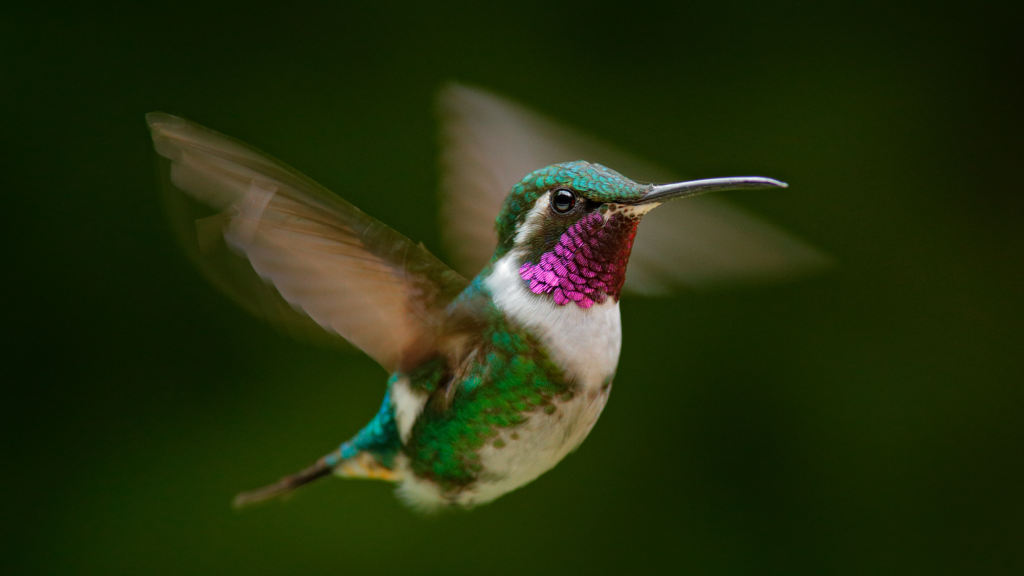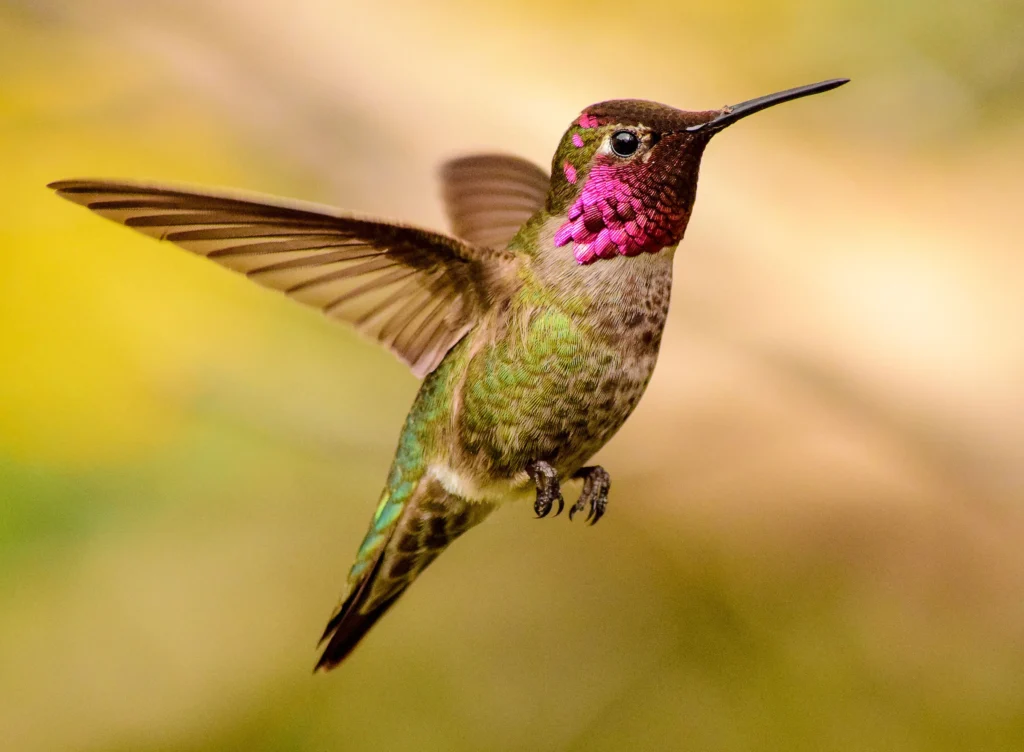Hummingbirds, with their vibrant plumage and astonishing aerial agility, are known for their remarkable hovering ability and swift flight, are among the smallest birds in the world. With over 300 species found in the Americas, hummingbirds showcase a dazzling array of colors and adaptations that have made them a source of fascination for both scientists and nature enthusiasts. From their unique feeding habits to their intricate courtship displays, hummingbirds exemplify nature’s ingenuity. In this exploration, we delve into the captivating world of hummingbirds and how their wings allow them to fit into tiny spaces.
Hummingbirds’ wings move in a figure-eight pattern during flight. Unlike most birds that flap their wings up and down, hummingbirds have a specialized wing structure and musculature that allows them to rotate their wings in a unique motion. This figure-eight pattern enables them to generate lift on both the upstroke and the downstroke, resulting in incredible maneuverability, hovering ability, and sustained flight even in challenging conditions.


Recently, a new high-speed video now shows how, using a bit of aerial gymnastics, hummingbirds can also slip through gaps narrower than their wingspan. But while many birds possess the ability to flex their wings at the wrist, allowing them to tuck their arched wings closer to their bodies for navigating through dense foliage such as branches, hummingbirds have a different wing structure. The wings of hummingbirds extend straight out from their bodies, lacking the same level of flexibility. As a result, flying through narrow spaces requires some tricky maneuvering.
Researchers report in the Journal of Experimental Biology, that Anna’s hummingbirds (Calypte anna) fly sideways to make it through holes too small for their wings. To avoid hitting a hole’s sides, the birds also flutter their wings while flying through a tight space rather than using their wings to the fullest extent. After flying through the obstacle a few times, the birds switched to a different tactic: flattening their wings against their bodies and shooting through holes like a bullet.
It’s unclear whether the hummingbirds learned the navigation techniques in the lab or whether they had these innate strategies within them. All four birds that were experimented on started with sideways flight and transitioned to the bullet-like technique, which could suggest that the same tactics get used in the wild. One hypothesis the researchers had is that “once they get a sense of what’s on the other side and a sense of their surroundings, then they switch over to this ballistic technique to avoid the consequences.” If this is found to be true, then it not only shows the hummingbirds’ agility, but also their capacity to learn quickly and adapt to the surroundings.
These results could help engineers develop aerial vehicles or robots suitable for navigating small spaces. Since hummingbirds are among nature’s best fliers and are fantastic at remembering their spatial environment, they are great for using as a reference to improve aerial technology.

